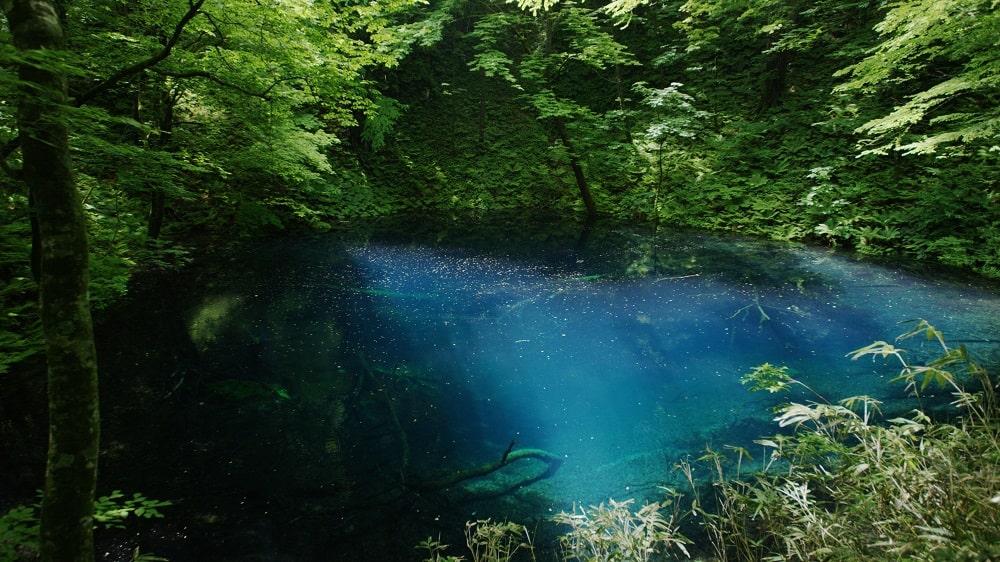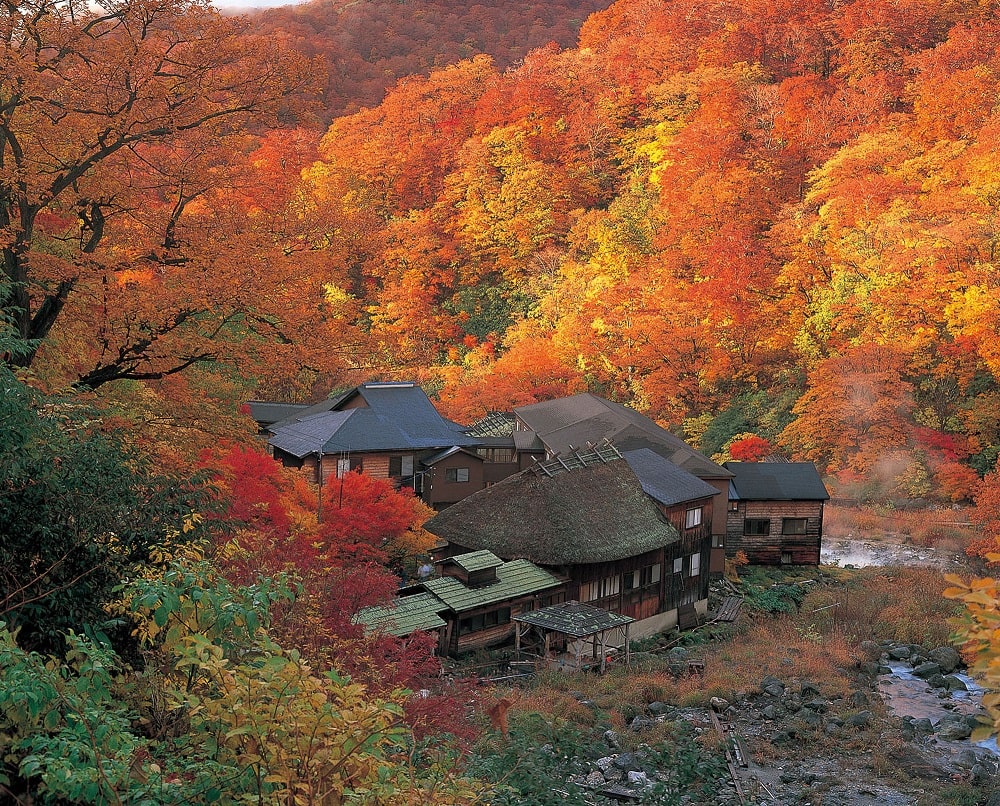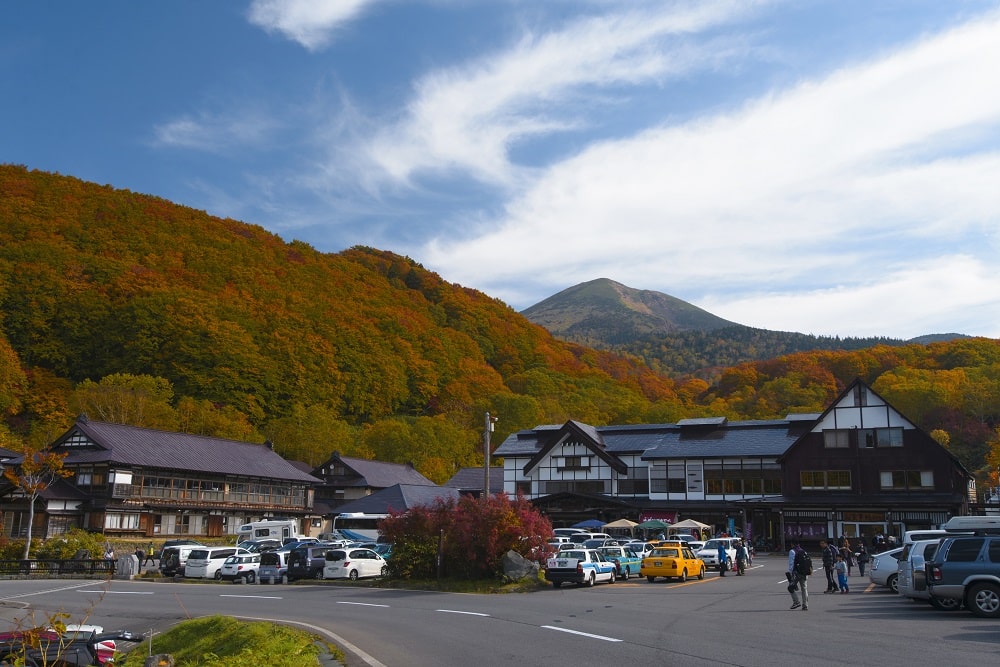WHERE TO GO WHEN IN TOHOKU JAPAN? - When it comes to traveling in Japan, most people visit big cities such as Tokyo, Osaka, or the famous ancient capital of Kyoto, but it would be a shame not to journey to the northern part of Japan. In Tohoku, you will find one of the world's greatest snow countries, rich in nature, history, and culture. Nowadays, many foreign tourists have become aware of its charms and make time for a visit.
The Tohoku region is located in the northeastern part of Honshu, the main island of Japan, and is renowned for its deep winter that brings freezing temperatures. There, you can enjoy many tourist spots that only a snow-covered wonderland can offer. Here are some of the tourist attractions in Tohoku where you can experience unique traditions, culture, and the mysterious nature of the region. While you're in the region, make sure to visit the local hot springs to escape the cold and partake in the healing waters.
Ginzan Onsen Town
Cherries, hot springs, natural landscapes of rugged beauty, and local agriculture are Yamagata's most renowned sightseeing and tourist attractions. You'll fall in love with the wonderful vistas of this northern prefecture.
If the Studio Ghibli movie Spirited Away is one of your favorites then a visit to Ginzan Onsen Town might be the perfect bucket list item for you. Ginzan means silver mine and this hot spring town once had flourishing silver production, but later shifted to tourism by opening dozens of hot spring inns along the small Ginzan River that runs through town.
As an onsen town, it has become one of the most famous hot spring resorts in Japan with an atmosphere that takes you back in time to the Taisho period (1912–1926). Strolling along the small streets on either bank of the Ginzan River gives you the best views of a traditional resort town that still retains last century charms.
Wooden hot spring inns line the Ginzan River and create a nostalgic atmosphere reminiscent of old Japan. Among them, Notoya Ryokan is the oldest and is most famous among foreign tourists because of its elaborate appearance that has inspired a hot spring inn that appeared in a famous anime.
Gaze up at the sparkling night sky from any of the outside baths in the onsen town. After you've had your fill of hot springs, walk along the river streets and find local foot baths set up along the river or stroll around the cafes and shops.
Kakunodate
Akita Prefecture in the Tohoku region is famous for its natural beauty, hot springs, and—of course—Akita breed dogs. Kakunodate is a town in Senboku-gun, Akita that still retains its quaint, old-fashioned appearance today. This former castle town—while Kakunodate Castle no longer remains—is famous for its well-preserved samurai residences from the Edo period (1603–1867) along with hundreds of weeping cherry trees (shidarezakura). Some people call this place the Little Kyoto of Michinoku.
The samurai residences are open to the public, allowing visitors to experience the traditional life of a samurai. Why not wear a rental kimono, take a jinrikisha (rickshaw) ride, and stroll through the streets as if you have slipped back in time to the Edo period. While you're enjoying the beautiful townscape, don't forget to visit the Kakunodate Kabazaiku Center where you can appreciate handmade traditional handicrafts that are elegant and rich in color with the unique luster of cherry trees.
READ ALSO
Nyuto Onsenkyo
After a two-hour train and bus ride north through beautiful scenery from Kakunodate, you arrive at Nyuto Onsenkyo (hot spring resort) in Tazawa. This stretch of seven hot springs is collectively called Nyuto Onsenkyo. The scattered springs are located at the foot of Mount Nyuto in Towada-Hachimantai National Park.
Among the seven springs, Tsurunoyu is the oldest in Nyoto Hot Spring Village, which was a natural therapeutic bath for the lord of the Akita clan. The thatched-roofed tenement house used by the samurai who protected the lord, "Honjin," still remains. The spring contains sulfur, sodium, calcium chloride, carbonic acid, hydrogen, and more, and are said to be beneficial for high blood pressure, arteriosclerosis, rheumatism, skin diseases, and diabetes.
Lake Juni (Twelve Lakes)
Venture to the northernmost prefecture of Japan's main island and head to Lake Juni (Twelve Lakes) to experience the mysterious beauty of nature. From Akita to the nearest station, Juniko Station, take JR East's Resort Shirakami and enjoy the spectacular seaside scenery of the Gono Line, which stretches about 150 km along the Sea of Japan.
The Twelve Lakes are a group of 33 lakes and ponds surrounded by beechwood forests located in Tsugaru Quasi-National Park, the western part of the Shirakami-Sanchi mountainous area. They are said to have been formed by a landslide caused by a major earthquake in 1704 and are called Juniko (Twelve Lakes) because twelve of the lakes and ponds can be seen from Mount Kuzure.
The Juniko area is accessible from April to November, when spring's fresh green and autumn's leaves are popular for trekkers. From December to March, the gate leading to Lake Juni is closed to vehicular traffic. It is not possible to explore the area on your own, but you can go with a guide and enjoy the snowy scenery.
Aoike (Blue Pond)
Aoike is the most famous pond, with a blue hue that looks as if it has been artificially colored. The water is so clear that you can see dead beechwood trees lying nine meters below the surface of the cobalt blue pond. Who wouldn't be fascinated by the mysterious blue color, the mechanism of which has yet to be elucidated?
Sukayu Onsen
For a truly historical hot spring experience, head east from Juniko to Sukayu. This hot spring village is a resort that dates back all the way to the Edo period. Located at the western foot of the Hakkoda mountain range, Sukayu will enchant visitors with its large mixed bath and spacious area called Hiba Sennin Buro—a large bathhouse with about 250 square meters of bathing space spread out in front of you—yet there is not a single pillar blocking the view. The bathrooms are all made of Japanese cypress wood, which has a unique scent and creates an old-fashioned atmosphere.
Sukayu (acid hot spring) named after its strong acidic nature. It is said to be effective in relieving muscle pain, joint pain, fatigue, and cold hands and feet, making it the perfect place to soak after trekking across Mount Hakkoda.




















0 Comments
FOLLOW ME : INSTAGRAM | BLOGLOVIN | PINTEREST | FACEBOOK | TWITTER